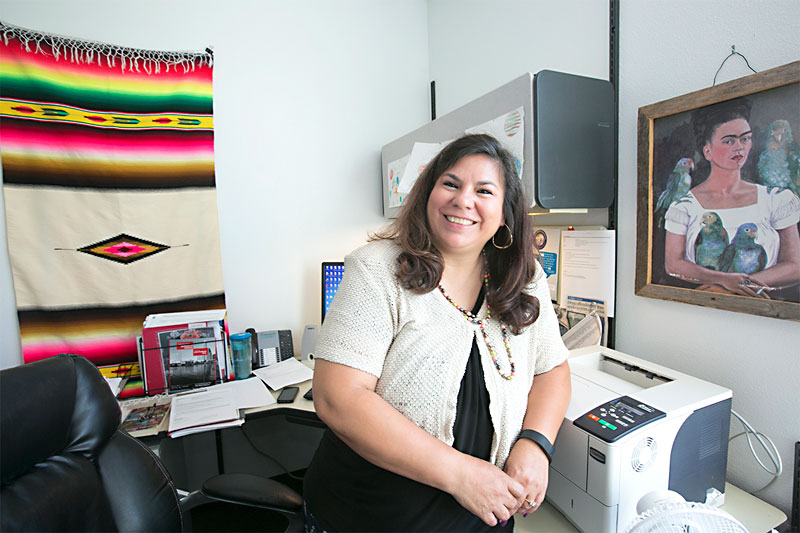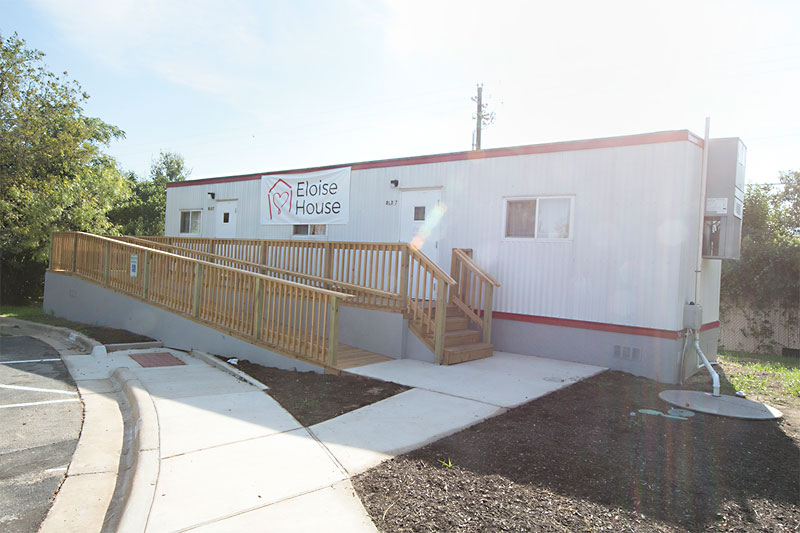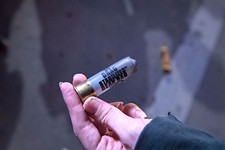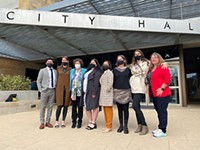A Safe Place?
Austin is no exception to the country's rape epidemic
By Sarah Marloff, Fri., Sept. 25, 2015
Every 107 seconds someone is sexually assaulted in the U.S., and in Texas, two in five women have survived a rape or sexual assault. Last year nearly 900 sexual assaults were reported to the Austin Police Department and Travis County Sheriff's Office alone, however, both advocates and law enforcement estimate that the high number only represents 10-15% of all rapes that occurred in and around Austin during 2014, suggesting that the number of assaults taking place could be closer to between 6,000 and 9,000.
If those numbers are startling, they should be. Though awareness about sexual assault seems to be spreading, numbers aren't decreasing – or even stagnating. According to SafePlace, the Austin nonprofit that assists those affected by sexual assault and domestic violence, every day an average of two people report being raped here in Austin, a number that closely matches national statistics.
"The sexual assault occurrence rate in Austin is not unusually high," says Assistant Travis County District Attorney Dana Nelson. "What surprises people is that the numbers in general are really high." Nelson, who sat on the SafePlace board for just over six years (her term ended in February), works as the sex crimes liaison for the D.A.'s office. Nelson is responsible for staffing every sexual assault case involving an adult victim. She's also one of six people to present all cases assigned to the 3rd and 4th district courts.
The horrifically high numbers at home and across the nation demand that we look at the bigger picture in order to understand the smaller one. Rape culture – or a "culture that glorifies rape as sexy," as defined by SafePlace Director of Community Advocacy Emily LeBlanc – is intricately tied to mainstream American culture. Depictions of aggressive, nonconsensual sex are all around us (see Game of Thrones for a variety of particularly graphic examples). "It normalizes violence in sex, and it desensitizes everyone," clarifies LeBlanc.
But rape isn't sexy. It's a violent, brutally invasive crime that can rob victims of their sense of self and worth. It's often physically – as well as mentally – damaging, causing the penetrated body parts to rip, tear, and bleed. It can involve broken jaws, black eyes, concussions, unwanted pregnancies, and STDs. For survivors, there's nothing sexy about it.
Rape Culture ATX
Like many cities, Austin can be a breeding ground for sexual assault. With a thriving entertainment district, multiple college campuses, a lively young community, and the never-ending procession of festivals and special events, partying is prioritized.
"We encourage people to come party, but we leave them vulnerable in so many ways," summarizes Lieutenant Gena Curtis with Austin Police Department's Violent Crimes Unit. "We even set up a system to protect our young people with a bus shuttling them to and from campus and Downtown, but on that bus they're so vulnerable. It makes you wonder, how can you have it all? At what point is it too much?"
With school back in session and fall music festivals fast approaching, Curtis' question couldn't be more aptly timed. Festivals – and similar events – combine mass consumption of alcohol with thousands of people, many of whom are from out of town. "It brings in more people – i.e., more rapists and more victims – crams them into small, usually hot spaces, and then plies them with alcohol," says LeBlanc. "It's ingredients for the perfect storm."
Alcohol-facilitated assaults are by far the most commonly reported attacks at festivals. "Many times it's predators who go to these festivals looking for the vulnerable target – someone who's intoxicated, from out of town, alone, etc.," explains APD Sex Crimes Sergeant Christine Chomout. And of course, the greater concentration of people can lead to a greater concentration of victims. According to Nelson, alcohol – and drugs, but to a much lesser degree – play a large role in the attacks that get reported to law enforcement. In fact, alcohol is the most frequently used – and detected – date rape drug on the market.
However, because alcohol is legal and extremely popular, evidence of its use rarely helps prosecute a predator. Yet that same evidence is a key component in victim-blaming. More often than not, rape culture points its finger at the victim: claiming they drank too much, dressed too slutty, that they did drugs, that they were too young to be out, that sex workers can't by definition be raped, that men by definition can't be raped, that they didn't say no, that they went upstairs when they should have known better, that they got in the car when they should have known better.
"You should be able to be passed out and not get raped," says Nelson, a sentiment echoed by each and every advocate the Chronicle interviewed, including Dolores Laparte-Litton, one of APD's two Sex Crime Victim Services counselors. "If I'm passed out in this room, it does not give anyone the right to rape me," states Laparte-Litton.
Neither SafePlace nor APD had any hard numbers on hand to showing that sexual assault increases at local festivals, and a spokesperson for Austin City Limits Music Festival tells the Chronicle, "There have been no reported sexual assaults to APD during the event, and C3 is not aware of any reports of this nature in ACL's history." However, LeBlanc confirms that, for whatever reason, the past two Octobers have seen a spike in advocacy requests. "The advocates who have been doing this for years anecdotally brace for the influx, which tells me there's something to it," LeBlanc says.
ACL says the festival is focused on prevention: "ACL employs roving patrols of officers throughout the park designed to intercede in incidents before they escalate ... There are more officers employed by ACL inside the park than patrol Sixth Street on a weekend night. There are multiple systems in place to make ACL a safe environment for everyone, including medical areas where intoxicated individuals can be placed and monitored until they can get assistance or be sent home with a sober friend."
Of course, the issue extends far beyond the reach of any festival. There's also the near-nightly procession made by varying states of intoxicated people up and down Sixth Street. According to APD's Curtis, Chomout, and Laparte-Litton, it's all too frequent that the assaults that begin Downtown leave the survivors in the dark. "They wake up somewhere and don't remember what happened," explains Chomout. "Those cases are really hard because oftentimes the person just wants to leave. They don't get an address and don't remember what the [perpetrator] looks like."
"We need to be asking: Why are perpetrators scooping people off the street at 2:30 in the morning?" says Nelson. "They're not intoxicated most of the time, and often they went to Sixth Street at 2am on purpose when they know bars are closing."
Supporting Survivors
Since the majority of APD's Sex Crime Unit's work is responsive (as opposed to preventative), they're now heavily focused on taking a "victim-centered" approach. This entails working from a place that first and foremost supports the person assaulted. While the preferred end-goal for law enforcement is a trial and prosecution for the crime committed, that may not be what helps every victim recover.
"It's important to remember that for rape survivors there's no one answer for how they heal," explains SafePlace Executive Director Melinda Cantu. "We need to hear victims when they say what they need. For law enforcement, a lot of times justice and healing comes in the form of prosecution, but dropping out doesn't make the survivor wrong."
Of course, the lengthy timeline attached to a rape trial and the numerous times survivors are forced to recount the attack don't help. There's currently a five-day window to get a sexual assault forensic exam (SAFE). After that window, physical evidence has been washed (or digested) away. Once a certified sexual assault nurse examiner (SANE) completes the exam – an intense and invasive process for the victim that lasts approximately four hours – the kit is sent to a warehouse in Houston.
Texas law allows assault victims the right to have evidence collected without choosing to report the crime to law enforcement, known as a non-report. Those who choose that route are given an identification number and two years to decide whether they want to make a report using the kit as evidence (the statute of limitations for rape in Texas is 10 years in most cases). After two years, the kit is destroyed. For survivors who report right away, the kit is sent off to be tested. Unfortunately, it takes about 10 to 12 months (sometimes longer) before that testing is done, due to an overwhelming back catalog of rape kits.
At that point, it's up to the D.A. to decide whether or not they can take the case to court. If Nelson and her team do take the case to court, there's another two- to three-year wait before the trial – proving that Law and Order: SVU is one big lie. According to Cantu, only 1% of the 10-15% of reported rapes will go to trial. What's more appalling, however, is that less than 3% of rapists will ever see a jail cell.
A lot of times it's easy to point blame at law enforcement or the prosecution team, but the bigger issue once again returns to rape culture. "The problem with cases not moving is rape culture," says LeBlanc. "We need to see an increase in prosecution – it's part of my 30-year plan. But it's bigger than the culture in the D.A.'s office. The whole community is good at victim-blaming, and that directly affects juries. They find some reason why the victim can't be themselves or someone they know and love, and that often leads to victim-blaming."
"Twenty years ago the way we talked about rape was much different," says Curtis. "Today the community has changed a great deal." Law enforcement and prosecution "used to be much more focused on the suspect; today we're more victim-centered. Social norms dictate a lot of that change, and we've come a long way. But we have a long way to go. The question is, what are people willing to stand by and accept?"
What's more, the women at SafePlace are insistent that rape has no singular archetype of victim. Numbers show that younger women in college are highly targeted; however, fixating on one "target" group only fuels victim-blaming within a jury pool. Spotlighting a singular victimology causes jurors to latch on to that one ideal while forsaking survivors who fall outside of that definition. This is especially problematic for queer survivors, male survivors, and people of color, because these groups don't fit with the cookie-cutter image of what a "victim" looks like.
While the journey to eliminate victim-blaming is a long one, APD is currently focusing on one thing they can easily control: how they treat a survivor. More and more, they're switching their victim interview technique to a more sensory-based style referencing Eye Movement Desensitization and Reprocessing therapy, something SafePlace has been advocating for some time now. As a psychotherapy used to treat trauma survivors, EMDR helps unlock memories stored deep inside survivors' brains. This style of interviewing refers to asking questions around the senses: What did it smell like? Was it hot? What did you hear? What did you feel? Instead of: And then what happened?
Because most people's higher-order brain functioning shuts down during traumatic events, memories get stored differently. Hence, asking sensory questions helps trigger the stored memories. It also helps for survivors to be given two full sleep cycles before being interviewed, as sleep gives the brain time to sort out details. LeBlanc recalls one survivor from a year or so ago who couldn't remember what her rapist looked like or where he took her. What she did remember was that she was wet. The rapist's sweat had dripped onto her as she was assaulted.
That key piece of information led law enforcement to test the clothing she'd been wearing during the assault, from which they managed to pull a DNA sample in order to catch the man who raped her.
"Giving power back to the survivor can be a long journey," says Curtis. "And it can be even harder when prosecution is denied. It's also hard for the detectives because they can't stay with every case when there won't be a trial because there's so much turnover."
APD's Sex Crimes Unit currently staffs 13 detectives and two sergeants (including Chomout). On average each detective is actively working on 15 to 25 cases at a given time. That's a constant rotation of anywhere from 195 to 325 active cases that require investigation and interviews.
Those numbers also don't take into account the non-active cases, nor the numerous reports that the sergeants clear daily because there's no possible follow-up. Approximately 350 cases have been assigned each month for the last quarter. Of course, not all cases are rape, as the Sex Crimes Unit covers over 30 offense codes, including peeping, flashing, and inappropriate photography.
Sex Crimes, like all the rest of APD, has its staffing decisions made by City Council. So whether it's having more officers on Sixth Street, or bringing on a new detective, it must be approved by Council.
In terms of better assisting survivors, Curtis also points out that her units, Sex Crimes and Family Violence, are located far from the center of Austin. The building can be found just south of where MLK turns into 969 – a location that is not easily accessible without a vehicle, as the closest bus stop is about a mile away on the opposite side of a four-lane highway. A large number of survivors of sexual assault and domestic violence don't have their own transportation and therefore must rely on public transit. While this might not seem like a huge factor, it greatly inhibits walk-ins from people looking for help. Especially when coming forward is already scary enough, no survivor needs one more factor to not report. "We need a bus stop here," says Curtis. "This location is not victim-centered."

Working Together
What makes Austin unique in its victim-focused approach is that everyone is working together, though that wasn't always the case. Cantu recalls a lot of tension between the nonprofit world and law enforcement for a time. But around 2004 a paradigm shifted. The Travis County Sexual Assault Response and Resource Team (SARRT) formed, with the primary goal of bettering local response to sexual abuse and assault by ongoing coordination among the agencies who work with the victims. The group, which is still active today, includes members of APD, SafePlace, Austin/Travis County SANEs, Travis County Sheriff's Office, prosecutors, and more.
APD and SafePlace agree that having such an open line of communication between all the branches has helped everyone to better realize their roles and limitations. It's also promoted a greater level of respect. "It's a big deal, and while it's not perfect, it's really good for the survivors, and children [we're working to serve]," says Cantu.
As one of a few cities that has such a well-oiled response team – to help keep victims from slipping through the cracks – APD gets frequent requests from other police departments asking for advice on building better community partners. "Sexual assault is not one group's issue," explains Chomout, who's been with APD for 21 years. She joined Sex Crimes in 2013, after begging Curtis to be transferred to the department. "Austin is a very progressive community. Here the police department is holding hands with the D.A. and the nonprofits. We all sit at a table together."
In fact, SafePlace credits Curtis with the recent decision to have all SAFEs conducted on SafePlace's campus, which took effect on May 30. "It's really about coming out of our comfort zones," explains Curtis. "The city of Austin might have been comfortable with the way we were conducting SAFEs [at emergency rooms, with lesser-trained staff], but we were retraumatizing victims in the process." The Eloise House – a four-room facility featuring two exam rooms as well as living room-like reception area – opened its doors on Aug. 13 and is now the location for all exams done in the Austin area. Within the first five days of opening, 16 SAFEs were conducted, which averages 3.2 rape victims per day.
What's Next?
Austin is not the worst offender when it comes to sexual assault – the disturbing numbers are on par with the national average. Sadly, the sexual assault rates are not part of what makes Austin weird, they're what make Austin normal.
"We're finally at a place where we do a decent job of teaching girls they don't have to be princesses, but we have not yet started teaching boys to not be perpetrators," explains LeBlanc, regarding how to evolve away from rape culture. "We have to change the culture fed to young men."
Nelson and Curtis agree. "There needs to be a re-focusing on what perpetrators are doing," says the assistant D.A. "When a predator is in the presence of the victim, they're there watching and staying as their target becomes more impaired. They're doing nothing to prevent them from being impaired because it serves their purpose. And let's be clear, their purpose is to sexually assault someone, not to have nonconsensual sex."
Sexual assault is a crime that incriminates bystanders as well. "I think folks can sometimes get invested in the group and think that since nobody else is saying anything it must be okay. We know that – more often than not – bystanders do not intervene," says LeBlanc. "If you see something that doesn't seem right, say something or get help. Austinites love our community and we should protect it, which means looking out for each other and letting friends/family/random guys [or women] at ACL [and other events with alcohol] know that sexual violence isn't okay in any form, be it in objectifying language, groping, or rape."
Got something to say on the subject? Send a letter to the editor.

















